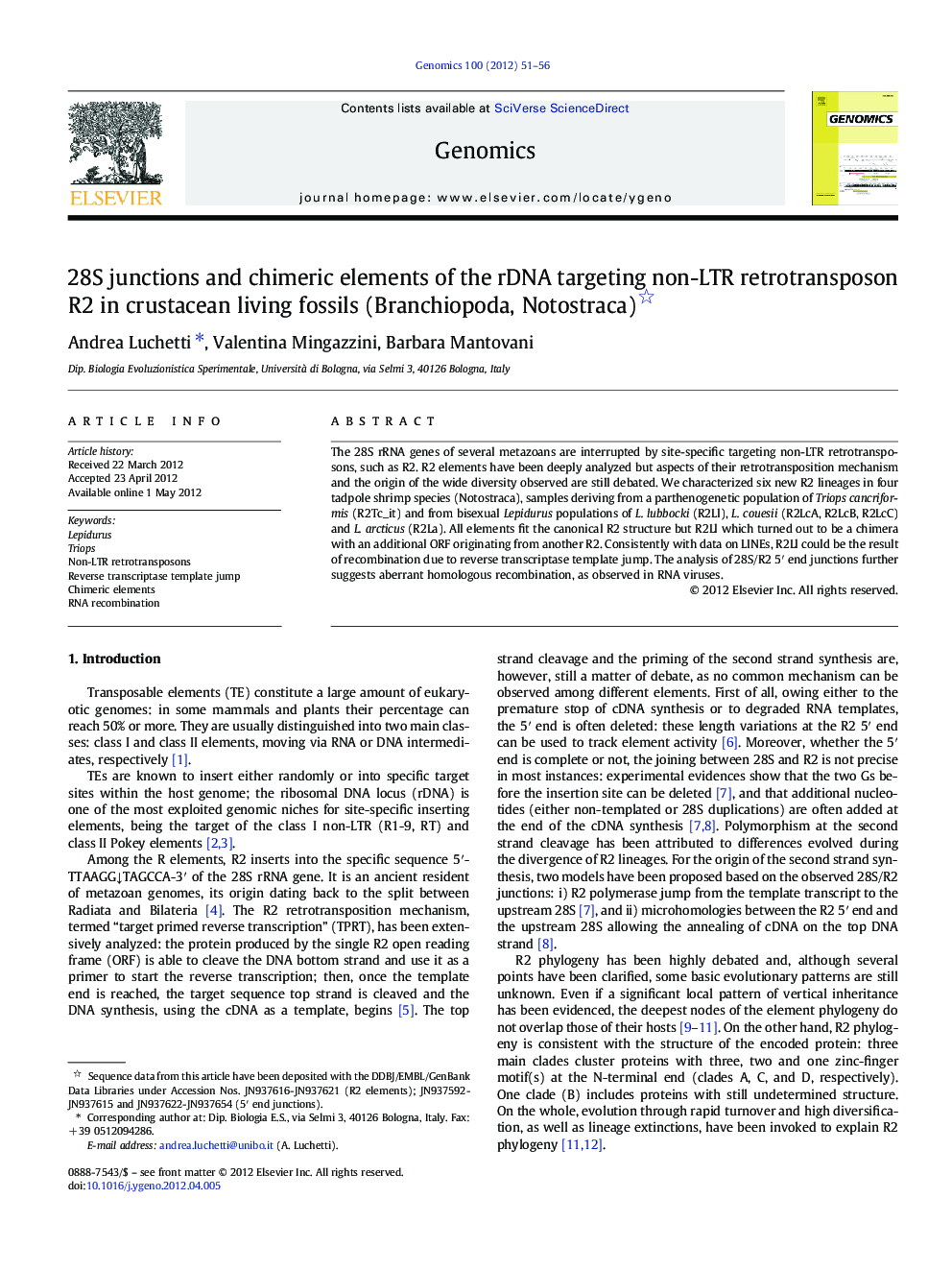| Article ID | Journal | Published Year | Pages | File Type |
|---|---|---|---|---|
| 2820982 | Genomics | 2012 | 6 Pages |
The 28S rRNA genes of several metazoans are interrupted by site-specific targeting non-LTR retrotransposons, such as R2. R2 elements have been deeply analyzed but aspects of their retrotransposition mechanism and the origin of the wide diversity observed are still debated. We characterized six new R2 lineages in four tadpole shrimp species (Notostraca), samples deriving from a parthenogenetic population of Triops cancriformis (R2Tc_it) and from bisexual Lepidurus populations of L. lubbocki (R2Ll), L. couesii (R2LcA, R2LcB, R2LcC) and L. arcticus (R2La). All elements fit the canonical R2 structure but R2Ll which turned out to be a chimera with an additional ORF originating from another R2. Consistently with data on LINEs, R2Ll could be the result of recombination due to reverse transcriptase template jump. The analysis of 28S/R2 5′ end junctions further suggests aberrant homologous recombination, as observed in RNA viruses.
► Six new R2 elements sequenced in four “living fossils” tadpole shrimps. ► One R2 is a chimera due to reverse transcriptase template jump recombination. ► Chimeric element is still able to be mobilized. ► R2 can move bringing part of the upstream sequence with them. ► 5′ end R2 junctions may be subject of aberrant RNA recombination events.
